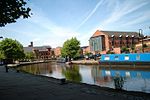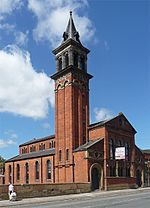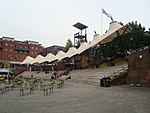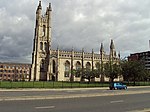Elizabeth Tower, Manchester
2022 establishments in EnglandApartment buildings in EnglandBuildings and structures in ManchesterGreater Manchester building and structure stubsResidential buildings completed in 2022 ... and 4 more
Residential buildings in ManchesterResidential skyscrapers in EnglandSkyscrapers in ManchesterUse British English from February 2023

Elizabeth Tower is a 153 m (502 ft) tall, 52-storey residential skyscraper in Manchester, England. The building is part of the first phase of the Crown Street development area at the southern end of Deansgate in the city centre, behind the Deansgate Square skyscraper cluster. It was designed by SimpsonHaugh architects and as of 2023 is the fifth-tallest building in Greater Manchester.
Excerpt from the Wikipedia article Elizabeth Tower, Manchester (License: CC BY-SA 3.0, Authors, Images).Elizabeth Tower, Manchester
Chester Road, Manchester City Centre
Geographical coordinates (GPS) Address Nearby Places Show on map
Geographical coordinates (GPS)
| Latitude | Longitude |
|---|---|
| N 53.47248 ° | E -2.25537 ° |
Address
Chester Road
Chester Road
M15 4ZH Manchester, City Centre
England, United Kingdom
Open on Google Maps









